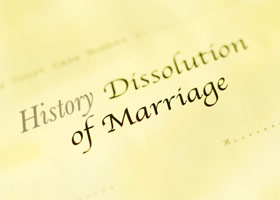
The history of Roman Dutch law shows that as Westerners our laws had in the ancient past been mainly laws based on oral customary law and minimal written law. Only since Justinian did we change with the first codification of Roman law under the Corpus Juris Civilis. During this period many of our laws changed from customary laws to customary written laws. Thailand has had written laws since before the ancient Ayutthaya period. It is believed that the codification of Thai laws occurred way before the invention of Thai script. The history of Thai laws and its codification was lost due to the war between Burma and Thailand when the capital was overrun and destroyed.
The marriage laws in Thailand during that period were known as Kodmai Laksana Pua Mia. These laws and others had been ordered codified by the then King Rama I in 1804. The codification of laws in Thailand was however sparked by an appeal in a divorce matter before King Rama I. The appellant in the matter argued that it was contrary to justice that his wife applied for and was granted a divorce in Thailand even though she was guilty of adultery. Even though all the legal provisions had been correct it was clearly in contravention of customary law. Having though that such an error could occur, King Rama I established a panel to codify all the laws. This was the first “General Code of Laws” which was a codification of all previous laws into one statue.
There had been two main features in ancient Thai law. The first being polygamy and the second being the powers bestowed on the husband (conjugal power). Wives had been classified into three categories in Thai law. The major wife or Mia Lung. The minor wife or Mia Noi. The last and lowest was the slave wife or Mia Klang Thasi. The reasons for the different classes of wives were made for the benefit of compensation. The estate in the event of death would be divided according to rank and should one of the wives have an ‘extra marital affair’ the rank of the wife would determine the amount of compensation payable by the adulterer. There is however a higher ranked wife however mainly for noblemen. These wives had been known as a Mia Prarjathan. These would be a wife given by the King to a nobleman for duty displayed towards his country. Conjugal right was the right to punish your wife with ‘bodily punishment’ when she was guilty of misconduct. The right of conjugal power still existed until early 2000 in the form a husband having the right to rape his wife.
Polygamy was however abolished in 1935 under Book V of the Civil and Commercial Code. This occurred after much debate being raised about it in 1912 with Prince Svasti as the main proponent for monogamy. This brought Thai law into a modern era and to the international standards as expressed by legal systems of most Western nations.
Since 1935, marriages had to be registered unlike before where a village ceremony would suffice. Now no marriage would be legally recognized unless it was registered. This gives further rise to laws of not only marriage but to rules for divorce in Thailand.
